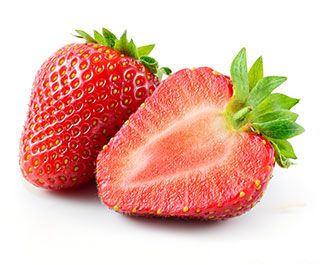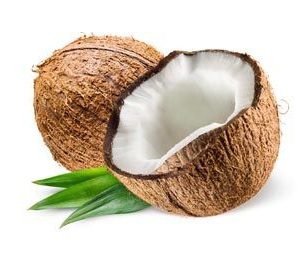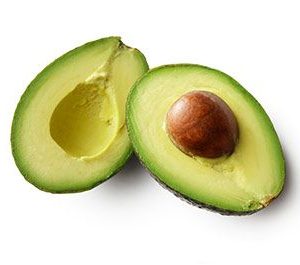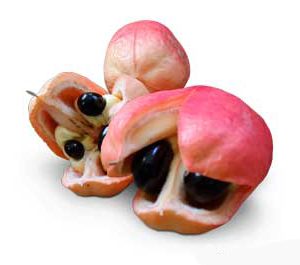Sweet, juicy and slightly tart at times, strawberries are popular worldwide. They are believed to be native to North America, where they were used by Native Americans in many recipes. Colonists transported strawberries to Europe in the 1600s, but it wasn’t until the 19th century that cultivation began in earnest. Today, China, U.S. and Mexico are the leading producers of strawberries.
Strawberries are red, heart-shaped fruits typically harvested during early summer, but in some regions, particularly in Florida and California, they’re available for picking all year round. They’re sold fresh, dried or as jams, jellies and preserves. I recommend buying only raw varieties to make sure they don’t have added sugars. Fresh strawberries can be eaten as is or used for smoothies, salads and cooked desserts.
Strawberries need little preparation before consumption — you just need to gently rinse them and remove their stem. Be sure to wash only what you will use because this fruit can quickly soak up water and rot. If you want your strawberries to last for several days, put the unwashed fruits in a single layer on a shallow bowl lined with paper towels, and store them in the refrigerator. You can also freeze them for longer storage.
Keep in mind that strawberries rank No. 1 in the Environmental Working Group’s Dirty Dozen list, which means they have the highest pesticide residue among any other produce. Be sure that you buy organic strawberries from trustworthy sources like your local farmers market to reap their benefits without risking your health.
Health Benefits of Strawberries
Strawberries contain various phytochemicals, with the most abundant one being ellagic acid. Studies showed that ellagic acid may help protect the cells against free radical damage and help reduce the risk for cancer by inducing apoptosis and inhibiting the processes involved in tumor growth and metastasis.
Strawberries are an excellent source of flavonoids, including kaempfrol, quercentin, anthocyanins and catechins, all of which have anti-inflammatory, antioxidant, anticancer and cardioprotective properties. Moreover, strawberries are rich in vitamins and minerals, particularly vitamin C, another powerful antioxidant, and manganese, an essential mineral necessary for bone formation and the metabolism of amino acids, cholesterol and glucose.
Despite these health benefits, you must consume strawberries in moderation because they contain fructose, which can be harmful to your health in excessive amounts. To learn more about the nutritional content of strawberries, check out the nutrition facts table below:
Strawberries Nutrition FactsServing Size: 3.5 ounces (100 grams), raw |
||
| Amt. Per Serving |
% Daily Value* |
|
| Calories | 32 | |
| Total Fat | 0.3 g | |
| Saturated Fat | 0.015 g | |
| Trans Fat | ||
| Cholesterol | 0 mg | |
| Sodium | 1 mg | |
| Total Carbohydrates | 7.68 g | |
| Dietary Fiber | 2 g | |
| Sugar | 4.89 g | |
| Protein | 0.67 g | |
| Vitamin A1 mcg | Vitamin C | 58.8 mg |
| Calcium16 mg | Iron | 0.41 mg |
Studies on Strawberries
A study in Biochemical Pharmacology evaluated the effects of the flavonoid fisetin against prostate cancer cells. This compound is most abundant in strawberries. The results showed fisetin may help inhibit the PI3K/Akt and mTOR signaling, an important factor in the management of cancer. The researchers noted that “fisetin could be a useful chemotherapeutic agent” not just for prostate cancer, but for other types of cancer as well.
A separate research study published in Cancer Letters found that the triterpene lupeol in strawberries may have “beneficial effects as a therapeutic and preventive agent for a range of disorders” because of its anti-inflammatory properties. Lupeol also did not exhibit toxicity to normal cells and tissues.
Strawberries Fun Facts
Strawberries are technically not true berries, but rather an aggregate fruit belonging to the rose family, just like raspberries and blackberries. In fact, they’re not even the real fruit of the strawberry plant. The sweet, red strawberry flesh many have come to love is actually the swollen receptacle of the plant, while the small, yellow “seeds” embedded on its surface are the true “fruits.” The botanical term for these seeds is achenes, and each average-sized strawberry has around 200 of them.
Summary
Strawberries are not just delicious — they also offer health benefits in the form of nutrients and bioactive compounds, such as ellagic acid, anthocyanin, catechin, quercetin and kaempfrol. These phytochemicals exhibit potent antioxidant and anti-inflammatory properties, which may help reduce your risk for chronic illnesses like cardiovascular disease and cancer.
Strawberries can be eaten fresh in salads or smoothies, or used as an ingredient for cooked desserts. When buying strawberries, make sure you only purchase organic ones from a trustworthy source, since this fruit is ranked high as produce that often has the largest amount of pesticide residue.







Reviews
There are no reviews yet.